
How perceptive a character is of her surroundings may have dramaturgical relevance.
A character who is good at noticing small details may make a good spy or detective, so if you are developing a detective or spy you may want to give your character this ability. But whatever your character’s profession, stop at least once per scene and ask yourself,
What is a detail that only this character might notice?
Why is this important? Because their perceptions can make characters more interesting and vivid.
If a certain plot event hinges on a character perceiving some small detail or other, it may be a good idea to plant a foreshadowing moment long before the scene, to heighten the impact of the act of perception.
Furthermore, a character’s perception may influence how your audience understands and enjoys the entire story. How exactly depends on two important factors:
- narrator
- point of view
(more…)

Creation Takes Time.
This is an age of faster, faster, more, more. At the latest since the advent of the internet, everything seems to be speeding up. Processes that took weeks a few decades ago now take only a few hours, things that in the twentieth century took hours now take place within minutes or seconds. You can get from A to B in less time than ever. The requirements on most of us for most of our work call for ever greater efficiency. We must not waste time. We must be quick.
Composing a story is a painstaking process. And yes, here at Beemgee we built our fiction tool in order to make the process of composing a story more efficient. We want to make it easier to organise a plot and determine the characters’ motivations – for the authors themselves, and for all the people communicating about the story, so between interested parties such as authors and their editors or screenwriters and producers.
But though we might want our authors’ efficiency to increase, let’s not kid ourselves. Composing a story is still a painstaking process. Because most of the time is spent thinking.
Thinking takes time. And that is mostly what plotting and outlining a story really is, thinking. (more…)

 Here at Beemgee, we’re into the thought behind the writing of stories more than the writing itself. So we’re all the more pleased that Writer.com approached us to talk about character development. While their speciality is AI-assisted text generation for companies, in their guest post, they have some good general advice on creating fictional characters. Thanks to Nicholas Rubright for this article. Nickolas is a digital marketing specialist and expert at Writer. In his free time, he enjoys playing guitar, writing music, and building cool things on the internet.
Here at Beemgee, we’re into the thought behind the writing of stories more than the writing itself. So we’re all the more pleased that Writer.com approached us to talk about character development. While their speciality is AI-assisted text generation for companies, in their guest post, they have some good general advice on creating fictional characters. Thanks to Nicholas Rubright for this article. Nickolas is a digital marketing specialist and expert at Writer. In his free time, he enjoys playing guitar, writing music, and building cool things on the internet.
Writing characters with whom readers can identify and empathize should be the goal of every writer, but it’s not a simple task.
To fully grasp a character’s motivations, desires, and anxieties, writers must dive deep into the character’s psyche. Character flaws and strengths work together to build a solid character.
But what is the most effective way to develop a character? And how can you establish a connection between your character’s dramatic decisions and the story itself?
Your characters are the heart and soul of your story. Thus, before you can write a single word, you must first understand your characters.
When it comes to character creation, you have several choices to make, and each choice affects the story in its own way. You must, however, choose what works best for your character.
While an unexpected detail can make the character more interesting, if it isn’t chosen carefully it can damage the character’s believability and ruin your reader’s immersion in your story.
Here are some guidelines and tricks to help you successfully create mouldable character templates for your story.
So, let’s dive in! (more…)
 Today’s guest post is by author Stefan Emunds.
Today’s guest post is by author Stefan Emunds.
Stefan’s favorite genre is visionary fiction – stories that have an enlightenment dimension. Enlightenment and storytelling have interesting parallels, which prompted Stefan to write a book about storytelling – The Eight Crafts of Writing.
Get a glimpse of his approach to story craft in his article.
Art and Craft
Storytelling is both art and craft, authoring and writing, plotting and pantsing.
1.1 Art and Authoring
Art is creativity. Creativity requires receptivity to the Muse and its inspirations.
Inspirations arrive as thought-images, which writers put into words. How to turn thought-images into words and assemble those into a structured story with vivid characters and an engrossing world is a matter of craft and skill.
1.2 Craft and Writing
The literal meaning of Kung Fu is a discipline achieved through hard work and persistent practice. Writing is Kung Fu.
Craft gives form to inspirations. Forms limit. Writers love the artistic side of writing, less so crafting, in particular, Story Outline. Writers are prone to procrastinate crafting.
But no limitations, no story. No canvas, no painting. No net, no tennis.
Understanding the difference between freedom and dominion helps to appreciate the constraints of craft. Freedom is a means to an end. We want to be free to do something, for example, to write a book. That’s all there is to freedom. Dominion, on the other hand, is mastery of structure. (more…)



Five years ago, three guys met at a notary’s office in a rather run-down part of Berlin.
They had decided to found a company, and on this day were making the declaration official – although they had no backing and no product. Why?
The circumstances of each of the three guys were quite different. One was employed, the other already ran his own business, the third had just left his job. Two were techies, one was the content guy, the one with the idea.
Looking back on it, what they had in common was the desire for a sense of purpose. Each of them wanted their working life to follow a vision, rather than a loop.
For let’s face it, most work is repetitive. You end up going through the same motions again and again, whatever they are.
But found your own company and you’re aiming at something. You’re pursuing a vision. You set yourselves goals, milestones. You have an ideal state you wish to achieve. And probably no idea what you’re letting yourself in for.
In short, when you found a company you become the protagonist in your own story. (more…)
Why The Hero Is Never Alone.
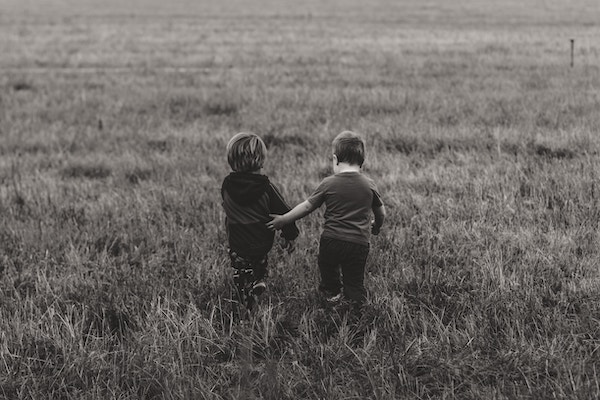
Allies Embody the Principle of Cooperation
Despite their complexity and diversity, there are essentially only three different kinds of human relationships.
That’s right, if you take a step back and try to categorize human interactions, you’ll find three distinct types. Biologists know this, because the principle applies to any species that lives in groups. Within the group, three types of behavior may be observed:
- individuals cooperate with each other
- individuals compete with each other
- individuals mate
Evolutionary biologists describe a spectrum of individual to group selection. Some animals will typically try to maximize their individual gain, as exhibited in behaviors such as taking the biggest share of food or the best space for offspring, without regard for other animals in the group. On the other hand, some species have evolved social organizations in which individuals may act purely for the group’s benefit rather than individual gain. Think of ants, bees, or termites.
Interestingly, on this spectrum between profit maximization and altruism, homo sapiens sit pretty much exactly in the middle. Humans are genetically programmed to selfishness, to seek what is perceived as best for oneself and one’s immediate family, and at the same time have a strong and innate instinctive and natural urge towards cooperation and social behavior – which ultimately also increases our survival chances.
Cooperation, neighborliness, charitable behavior, acts of kindness – even if they costs us, they generally make us feel better and they make life in the tribe, clan, or community so much easier. Mind you, we do like to look after number one. We’re not going to simply give up our salaries, our homes, our lifestyles. Our own needs and those of our families come first. Who is not aware of this dichotomy?
The pull in opposite directions between egoism and altruism is perhaps one of the specifics of human beings as a species that has caused us to evolve abstract thought processes as well as complex societal and cultural forms. It also sheds light on basic principles of storytelling such as conflict. (more…)
Archetypal Antagonism in Documentary Film and Fiction
by Amos Ponger of Mrs Wulf Story Consulting

Stories are intricate mechanisms
Documentary film is a powerful genre that draws much of its energy from the material of real-life action. Consuming documentaries, we as spectators often ignore the fact that documentaries, like fiction, are a constructed clockwork of storytelling. Since the digital revolution, the amounts of raw material for documentary productions have probably grown tenfold, shifting much of the dramaturgical construction work to the editing room. Dealing with hundreds of hours of material you may say that 90 percent of the editing work in documentary film is “finding the story“, discovering what your story is about.
One issue editors often encounter while working on the narratives of documentary films is that many directors tend to neglect the importance of understanding and designing their antagonist or their antagonistic powers, the Antagonism.
Sure, you love your protagonists. You identify with their strivings and journeys, and you as a storyteller have probably given a lot of thought to making them appealing to your audience, giving the audience someone they can identify with. Your protagonists may be an inspiration to you, or you may yourself strongly identify with them, you may share or appreciate some of their characteristics and values.
At the same time you have probably not given your Antagonist/m the same attention. Have you? (more…)
How narrative structure turns a story into an emotional experience.
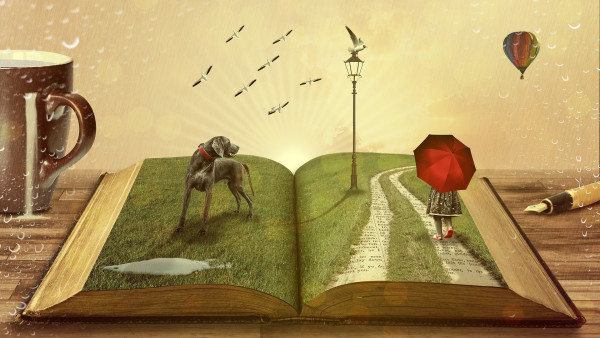
Image: Comfreak, Pixabay
Storytelling is a bit of an overused buzzword. While we are all – by dint of being human – storytellers, how aware are you of the principles of dramaturgy? What exactly constitutes a story, in comparison to, say, a report or an anecdote?
And just to be clear, the following is not a story. It’s an how-to article.
Whatever the medium – film or text, online or offline –, storytelling has something to do with emotionally engaging an audience, that much seems clear. So is a picture of a cute puppy a story? Hardly.
Stories exist in order to create a difference in their audience. Stories always address problems and tend to convey the benefits of co-operative behaviour.
While there simply is no blueprint to how stories work, let’s examine the elements that recur in stories and try to find some patterns.
Who is the story about?
All stories are about someone. That someone does not have to be a person, it can be an animal (Bambi) or a robot (Wall-e). But a story needs a character. In fact, all stories have more than one character, with virtually no exceptions. This is because the interaction between several characters provides motivation, conflict and action.
Moreover, stories usually have a main character, the figure that the story seems to be principally about – the protagonist. It is not always obvious why one character is the protagonist rather than another. Is she simply the most heroic? Is she the one that develops most? Or does she just have the most scenes?(more…)
Stories are driven by yearning.
In order to get somewhere, there has to be a current position and a destination. Stories fundamentally describe a change of state – things are different at the end of the story than at the beginning. Hence a story has a starting point and a final end point, a resolution.
But that’s not enough. There has to be fuel, energy to power the motion between the one position and the other. In stories, this driving force is the motivation of the characters.
Motivation is so important to storytelling that we are going to look at several aspects of it. We’ll break it down into what we call the wish, the want, and the goal, all of which are interlinked but also distinct from each other. Here in this post, we’ll deal with the wish.
A wish is inherent in the character from the beginning. We might call it a character want, as distinct from a plot want (which we deal with elsewhere).
Some examples: (more…)
The logline is probably the hardest sentence to write.
The logline sums up a story in one sentence. This sentence should be memorable and clear, which means it is unlikely to be much longer than thirty words or to have complex syntax.
Once your reader has read your logline – or your listener heard it –, they will ideally know the following about your story:
- who it is about
- what the central conflict or main problem is
- what the most important characters do in the story
- why they do it, i.e. what their motivations are
- how they do it
- where all this happens, i.e. what the setting is
- when it happens, i.e. what the period is
The first of these points even counts double – since usually the logline should convey not only who the main protagonist is, but also what antagonism she faces.
What’s the logline for?
The purpose of the logline is to pitch your story.(more…)

Conflict is the Lifeblood of Story.
In real life, conflict is something we generally want to avoid. Stories, on the other hand, require conflict. This discrepancy is an indicator of the underlying purpose of stories as a kind of training ground, a place where we learn to deal with conflict without having to suffer real-life consequences.
In this post we will look at:
- An Analogy
- Archetypal conflict in stories
- Conflict between characters
- Conflict within a character
- The central conflict
Along with language (in some form or other, be it as text or as the language of a medium, such as film) and meaning (intended by the author or understood by the recipient), characters and plot form the constituent parts of story. It is impossible to create a story that does not include these four components – even if the characters are one-dimensional and the plot has no structure. However, it is formally possible to compose a story with no conflict.
It just won’t be very interesting.
In terms of narrative, conflict is presented as a series of confrontations of increasing intensity. If there are no confrontations – no battles of wits or fists, no crossing of swords or sparring with words – there is little to hold the audience’ attention. To create confrontations, there must be at least a of conflict of interest between the characters.
Conflict does not occur at particular points in a story. It permeates the whole of it. It expresses the values transported by the story’s theme. It creates at least two options of choice, both of which must appear to some extent reasonable and justifiable to the protagonist, particularly at the moment of crisis.
(more…)
In stories, the characters’ emotions are ultimately the sources of their actions, because motivations are ultimately based on emotions.
Determining the emotional core of a character in a story may lead to a clearer understanding of that character’s behaviour, i.e. their actions.
What we’re getting at here is essentially a premise for creating a story. We have noted that if you plonk a group of contrasting characters in a room – or story-world –, then a plot can emerge out of the arising conflicts of interest. If you’re designing a story, one approach is to create the contrasts between the characters (their essential differences of character) by giving each character a core trait or emotion. One character may be frivolous, another penny-pinching. One may be fearful, another cheeky.
You might object: Isn’t that a bit one-dimensional? Aren’t characters with just one core emotion flat?
Not necessarily. Focusing on one core emotion is not a cheap trick. It is as old as storytelling.
Classical Storytelling
Ancient(more…)
Certain universals are feared by almost everyone. Such as death.
If a character in a story has loved ones, losing them is an even stronger fear.
A story engages the audience or readers more strongly when there is something valuable at stake for the character, such as his or her own life or that of a loved one. So giving a character a universal fear is usually a good place to start.
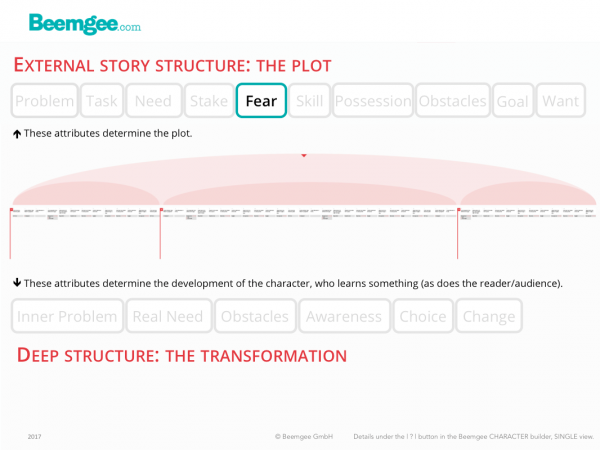
Giving a character a specific fear to overcome requires this information to be placed early in the narrative. The fear is then faced at a crisis point in the story, usually the midpoint or the climax.
Characters can have specific fears. A fear which is specific to one character must be set(more…)
You’re on a boat, and you see somebody fall into the water. Which of the following two cases would cause you to react with stronger emotion?
- The water is four feet deep and you know that the guy who fell in is a good swimmer
- The water is four feet deep and the person who fell in is a three year old girl who can’t swim
Presumably your emotional reaction would be stronger if the child fell off the boat. Because you know that the child’s life is at stake. The first situation is not life-threatening, the only thing at stake is the dryness of the man’s clothes and his self-esteem.
The degree you care about events that happen to people, and to yourself, is directly related to what’s at stake. This applies as much to fictional characters as in the real world.
Hence it is immensely important for storytellers to(more…)
Stories are about people who want something.
We can distinguish between two different types of want:
- the wish, or character want
- the plot want
Marty McFly wishes to be a musician (character want). He also wants to get Back to the Future (plot want).
The wish or character want is a device which adds cohesion to the story, usually in the form of the set-up/pay-off. Marty is seen at the beginning of the film practicing the guitar; at the end of the film he plays at a concert. A character-inherent wish is a useful technique to make the character clearer to the audience, but it is not essential to composing a story.
Indispensable is what we have called the plot want. As a result of the external problem – the trigger event that sparks the chain of cause and effect which the bulk of the plot consists of –, the character feels an urge, which provides the motivation for the character’s actions in the story.
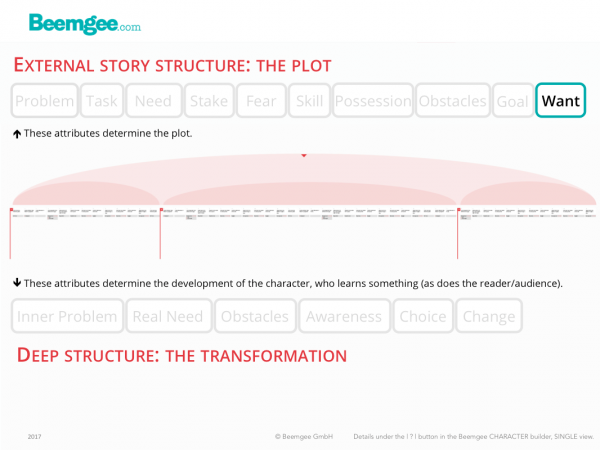
The want is the state for which the character strives, and is distinct from the goal.
In this post we’ll be talking about active vs. passive characters, motivation, the difference between a want and a goal, a couple of writer traps to avoid, and contradictory wants.
Active Characters
Characters have to be actively acting of their own volition. The want has to be urgent and strong enough for them to do things. If the want is missing or too weak, the character will lack motivation and appear passive. A passive character is usually not interesting enough to hold the audience’ or readers’ attention.
Why is this so?
Evolutionary explanations of stories attempt to shed light on the phenomenon. When characters react to events rather than cause them, they appear weak, as victims in a chaotic, uncontrolled world. Which means that there is not much we can learn from them. Humans try to see cause and effect in everything, not just in stories. And humans experience stories physically and emotionally (our hearts beat faster, our palms sweat), so there is really not much difference between how we experience a story and real life. Since we learn from experience, we instinctively prefer stories which provide us with experiences that benefit us in some way. In stories we vicariously experience or practice primarily social problem-solving, without suffering real-life consequences. We tend to learn more when we experience stories of self-motivated problem-solving.
Motivation
There is a good reason for that cliché about actors always asking about their motivation. It is motivation that prompts the characters in a story to do the things they do. Stories seem to work best not only when characters are active rather than passive, but often when they have comprehensible reasons for their activity.
The reason for what a character wants is usually comprehensible for the audience or reader because of the external problem. In simple terms, the character wants to solve the problem. Take the Cinderella story as an example. Her problem is that she is bound to the stepmother and her two nasty daughters.
In other words, the want is a vision the character has of his or her situation without the problem. Hence what the character wants is actually a particular state of being. Such a state might mean being in a position of wealth, power or respect, or being in a happily ever after relationship. Cinderella wants merely to be free of her involuntary servitude, if only for a little while.
This makes the want distinct from the goal, which is the specific gateway to the wanted state of being, as perceived by the character. A story usually sets up a goal the character needs to reach or attain in order to achieve the want. In Cinderella’s case, it is attending the ball.
So, a story has its characters pursue their wants. These different wants oppose each other, causing conflicts of interest. The conflicting wants make the characters active, and the audience/readers like stories about actions, that is, about characters who do things.
Sounds simple.
And yet frequently stories seem to mess up on this vital point.
Next to passive characters without a strong enough want, lack of clear motivation is a huge writer trap. It is possible to write a whole story full of characters who are reactive instead of active, or who do things of their own volition but without that volition being clearly recognisable to the audience/reader. It is perhaps even tempting to write stories like that, because they seem more lifelike. In real life, people do not necessarily have distinct goals. Often, our wants are vague and not clearly definable. What about writing a realistic story about a character with a general sense of dissatisfaction, who, like so many of us, has lost sight of any clear objective in life?
It’s doable, certainly. But the audience/readers will probably start to look for the specific want of such a character. They would probably begin to expect the story to be about this character’s search for a clear objective in life. That might be the want the audience would tacitly ascribe to the character.
And if the story does not bear such motivation out, the risk is significant. Because stories in which the audience does not understand what the characters want lack emotional impact.
Contradictory Wants
A way of adding psychological depth and emotional complexity to characters is to give them several and even contradictory wants. Gollum in Lord Of The Rings wants the ring. Yet a part of him also wants to give up the ring and help Frodo. Next to solving the case, Marty Hart in True Detective wants to be a good husband and family man, but he also wants affairs with other women. That’s three wants for one character.
A want is not merely a yearning, it is an expression of values. What a character desires shows the audience something about that character. In this sense, two contradictory wants provide the basis for a powerful scene of choice. At a crisis point, the character may face a dilemma and have to choose between two courses. Both might lead to some state the character desires, but these desires prove to be mutually exclusive. For the audience, which choice is the right one might be obvious – they will be rooting for the character to go one way. But for the character there may be a strong pull the other way. The final choice shows the character’s moral fibre – and often expresses the story’s theme.
When not to want
Is it really always absolutely necessary for every character to have a clearly defined want?
Not entirely. Because, of course, there are exceptions.
In certain cases, the author might deliberately obfuscate the why of a character’s actions in order to inject mystery. Not knowing something keeps the audience/reader guessing and turning the pages or not switching the channel. Usually this mystery is cleared up at some point. The audience tends to expect that. Which implies that even if the want was not made clear to the audience early in the story, it was there in the character nonetheless – and certainly the author was aware of it.
Injecting mystery by keeping character motivations hidden is not in itself a writer trap. But nearly. When tempted to use such a device, an author should at least consider if it would not actually be more interesting for the audience to know the character’s motivation.
Having said that, there are rare cases where a character’s motivation does remain unexplained. And those cases can be powerful. Especially when it’s a baddy we don’t understand.
Think of Iago in Shakespeare’s Othello, who is simply bad to the bone and we’ll never really know why. Shakespeare – deliberately, one presumes – gives no hint as to what Iago hopes to achieve by ruining Othello. Shakespeare might easily have given Iago some clearly understandable motivation, such as revenge of a past wrong, envy of Othello’s success, desire to usurp Othello’s position, lust for Desdemona. But he didn’t. And Iago is one of the most superb villains ever.
Another possible exception are (fiction) memoirs in the first person, such as David Copperfield, The Catcher in the Rye, Saul Bellow’s The Adventures of Augie March, or William Boyd’s Any Human Heart. In such stories, the effect of the narrator telling his or her own story creates a disparity between the time of the story told and the implicit future time of the act of telling. The narrator is relating a past from the perspective of an older self. This older self has reached a state of being which is different from that of the character being told about – the narrator is wiser than his or her younger self. This creates an effect for the reader: the reader wants to know how the character reach this older, wiser state. With this device, it is possible to make character wants less obvious or direct and still maintain an emotional drive to the story.
Perhaps the most interesting thing about a character’s want is how it stands in conflict with what that character really needs.
Related function in the Beemgee story development tool:
Character Developer
Click to open a new story project:

In storytelling, a character’s convictions and beliefs determine his or her choice of actions – at least in his or her conscious mind.
Convictions and beliefs are effectively values put into words. They lead to a rationalised intellectual stance and can be the basis for lifechoices and actions. A set of beliefs or convictions is the articulated version of a character’s values or emotional stance.
Consider story’s predisposition for cause and effect. If we understand the belief-system or intellectual stance as the effect, the value-set or emotional stance is the cause. Now, it may be nit-picking to make the distinction between felt values and stated beliefs. But then again, it might be quite helpful to see by what line of reasoning a character justifies his or her behaviour.
The effect can be powerful when there is a discrepancy (i.e. conflict) between what the character thinks is the reason for his or her actions and the real reason. When the audience or readers see that the words and thoughts of a character do not match with what that character is actually motivated by, the irony can be a satisfying story experience.
The Want as Beliefs, the Need as Values
(more…)
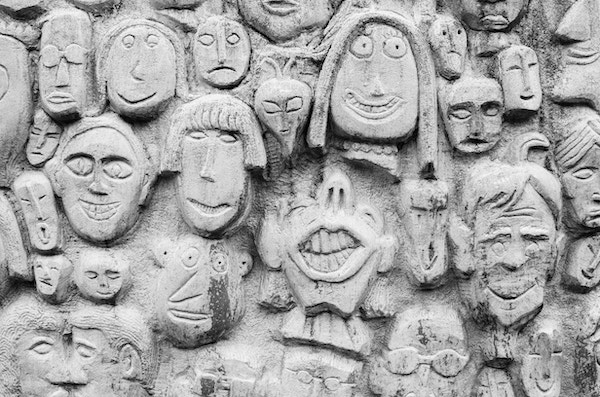
Stories need characters. What the characters do creates the plot.
With a well-rounded cast of characters, the plot will almost take care of itself. A story gets energy from the dynamic that occurs between the all the characters in it. The interaction between the characters is fueled by contrast, motivations, and conflict. Put a bunch of characters in a room – i.e. on a stage, between the covers of a book, between the first and last shots of a movie – and the plot is likely to emerge on its own. As long as there are contrasts between the characters and their motivations, conflict will arise.
So how does an author cast the characters that bring the story to life?
First of all, one character is rarely enough. Almost all stories need several characters. Even Robinson Crusoe couldn’t hold out alone. It’s the interplay between characters that creates interest. For interplay, read conflict.
Conflict in storytelling does not mean fights and battles. It means a conflict of interests.
Characters become characters because they have interests. Their interests make them do what they do, and this doing is what drives the plot.
What does that mean?
It means characters are motivated. They(more…)




 Here at Beemgee, we’re into the thought behind the writing of stories more than the writing itself. So we’re all the more pleased that
Here at Beemgee, we’re into the thought behind the writing of stories more than the writing itself. So we’re all the more pleased that 











